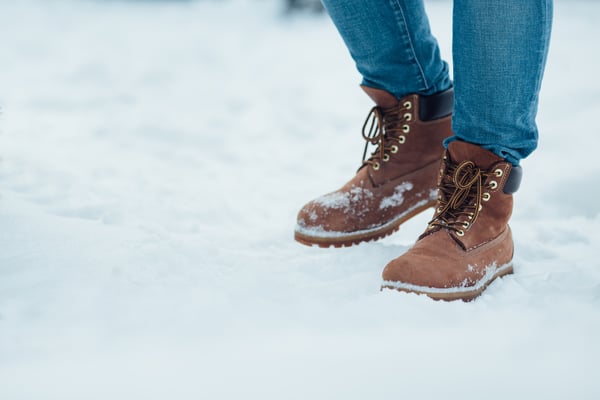Construction Safety Recommendations for Winter

The construction industry is characterized by many risks, such as working at heights and the presence of heavy equipment. The winter weather brings additional risks to project sites, which include freezing temperatures and slippery surfaces. The year 2020 brings an additional challenge since construction firms must protect workers from COVID-19. Also, many viruses spread more easily during winter, and many experts believe this is the case for SARS-CoV-2.
Walking on snow or ice is one of the main risks during winter, and also a risk that is underestimated greatly. In construction sites, the presence of slippery surfaces increases the risk of falling from a tall place or into an excavation. To keep balance on ice, we must adapt how we walk. In other words, if we walk normally without being conscious of each step, there is a high chance of falling.
Complete your projects safely with our professional construction management services.
The wind is already a risk factor in construction, especially when the project involves cranes and other lifting equipment. During winter, high winds can be combined with low visibility due to snow. Also, the combination of low temperature and fast wind has a chilling effect that can be dangerous.
Preventing Falls in Construction Sites During Winter

To reduce the risk of falls during winter, the first step is ensuring that everyone at the project site uses adequate footwear. In general, soles made of rubber and neoprene offer a more stable footing than other materials. Attachable ice cleats can be used for additional stability, but workers must be aware that they can damage some surfaces, and remove them when needed.
Construction personnel should ideally avoid walking on slippery surfaces as much as possible. However, if walking on snow or ice is unavoidable, the following recommendations can be very useful:
- Carrying the body weight with the front foot, and moving the back foot with short steps.
- Alternatively, workers can shuffle forward slowly, still ensuring that body weight is carried by the foot in front.
- Spreading out your feet increases the area available to balance your weight.
How penguins walk on ice may seem funny, but this is exactly how they avoid falling, and the US CDC recommends it. In the US, around one million people hurt themselves each year when walking on ice or snow - walking carefully may be slower, but it prevents serious injuries. Learning from nature is often a good idea in engineering and construction!
We expect an icy surface to be slippery, but snow can be misleading because the surface below is hidden from sight. For example, snow may hide an ice sheet, and anyone who does not expect it can easily slip. Cutting corners and taking shortcuts is not recommended in project sites, since ice patches could be hidden under the grass or snow.
Importance of Weather Monitoring During Winter
.jpg?width=600&name=Article%2002%20Image%2003%20(1).jpg)
A sudden gust of wind is very dangerous during lifting operations or when working at height. During winter, the windchill effect also becomes a considerable risk: at a given temperature, a windy environment feels much colder than a calm environment. Workers should take shelter when high winds are combined with low temperatures, or they are exposed to hazards like frostbite and hypothermia.
A weather monitoring system is valuable in a construction site since project managers can make decisions based on the exact weather conditions onsite. Otherwise, they must rely on less accurate weather forecasts, which cover larger regions. Also, a weather forecast cannot predict the exact moment when a gust will occur.
Weather monitoring not only protects workers but also construction equipment and work-in-progress. For example, project managers can suspend a lift if weather conditions are unsafe. There are also cases in which equipment manufacturers provide derating instructions for low temperatures.
Conclusion
Regardless of the industry, preventing accidents is better than facing their consequences. Human injuries and fatalities cannot be described in monetary value, but even the measurable costs of accidents are normally higher than prevention costs.
The combination of winter weather and the COVID-19 pandemic brings additional challenges to construction, which is already considered a high-risk sector. Adequate footwear and walking property can help prevent falls on icy surfaces. At the same time, weather monitoring can be used to detect hazards that justify a suspension of project activities.

Michael Tobias
Michael Tobias, the Founding Principal of NY Engineers, currently leads a team of 150+ MEP/FP engineers and has led over 4,000 projects in the US
Join 15,000+ Fellow Architects and Contractors
Get expert engineering tips straight to your inbox. Subscribe to the NY Engineers Blog below.

